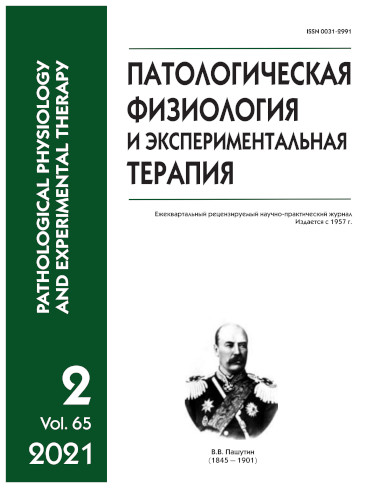Relationship of the hemostatic system with the activity of the cardiovascular system in women with essential hypertension depending on the methods of applied therapy
Abstract
Aim. To study the relationship between heart rate variability (HRV), hemostasis, and hemodynamic functions in women with essential hypertension (EH), depending on the method of therapy. Methods. 72 women with hypertension were monitored. Two patient groups were evaluated: the first group (EH-1) had recceived only drug therapy and the second group (EH-2), in addition to drug therapy, had regularly participated in at least three 1.5 mos long courses of kinesitherapy over a 2-3 years period. To study hemodynamics, we used a miniature Dynamic Light Scattering (mDLS) sensor from Elfi-Tech (Rehovot, Israel), which measures signals initiated by skin blood flow and uses a technique for decomposing the signal into frequency components associated with different hemodynamic sources. Information on the variability of RR intervals was extracted from the pulse component of the mDLS signal, and parameters of heart rate variability were calculated. Indexes of the coagulation system were studied, including activated partial thromboplastin time (APTT), prothrombin time (PTT) with calculation of INR, thrombin time (TT), concentrations of fibrinogen and factors II (prothrombin), IIa (thrombin), IX, and X [10]. In addition, spatial fibrin clot growth was determined with a Thrombodynamics Registrator T-2 apparatus. The method benefits are its objectivity and a possibility of photorecording of the clot growth at 5, 15 and 30 min. Results. Both in the EH-1 and EH-2 groups, numerous correlations were detected between various parameters of HRV, the hemostatic system, and hemodynamic functions, as well as between the parameters of the hemostatic system and hemodynamic functions. The data are presented in the form of a matrix. The data indicate that shifts in the hemostatic and hemodynamic systems of EH-1 patients induced by cardiac activity and resulting from activities of both the sympathetic and parasympathetic sections of the autonomic nervous system (ANS) are aimed at enhancing the hemostatic properties of blood, and this contributes to thrombotic complications. At the same time, in EH-2 patients, HRV had practically no effect on the hemostatic system and to a lesser extent was related with the hemodynamic function. Due to this, the state of hemostasis and hemodynamics in EH-2 patients approaches the state found in healthy women. In addition, the relationship between the hemostatic system and hemodynamic function in both EH-1 and EH-2 patients are aimed at preventing intravascular coagulation. Conclusion. The use of systematic, moderate physical activity for 2 to 3 years helps hypertensive patients to normalize the relationship between HRV, the hemostatic system, and hemodynamic functions. This contributes to a more normal and stable blood pressure.






